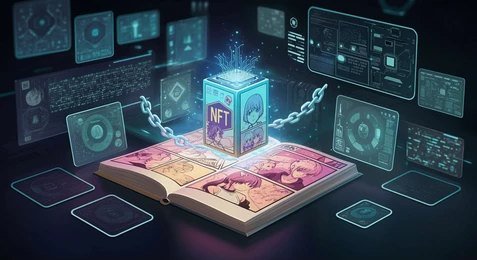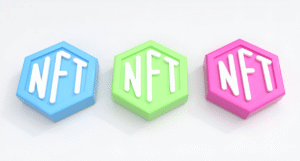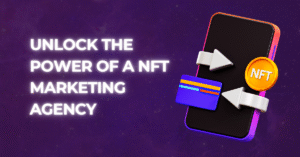Why Is the NFT Market Down? Understanding the Decline

To understand the current downturn, we must first examine the meteoric rise of NFTs. In early 2021, digital artist Beeple sold an NFT artwork for $69 million at Christie’s auction house, catapulting NFTs into mainstream consciousness. This watershed moment triggered a gold rush, with celebrities, major brands, and artists rushing to capitalize on the new technology.
Trading volumes on major marketplaces like OpenSea reached billions of dollars monthly at the peak. Profile picture projects like CryptoPunks and Bored Ape Yacht Club saw individual items selling for millions. The exuberance of this period created an unsustainable bubble that was inevitably going to face correction.
Cryptocurrency Market Volatility
The NFT ecosystem is fundamentally tied to cryptocurrency markets, particularly Ethereum. When cryptocurrency values decline, NFT valuations typically follow. The volatility in crypto markets has created an unstable foundation for NFT valuations, with many investors pulling back during bear markets.
This relationship works both ways – during crypto upswings, NFT markets tend to heat up as investors have more capital and confidence. However, the extended crypto winter has dampened enthusiasm across the entire blockchain space, affecting NFT trading volumes dramatically.
The psychological impact of watching cryptocurrency prices fluctuate wildly cannot be understated. When Ethereum’s price dropped significantly from its all-time highs, many NFT collectors saw their portfolio valuations diminish not just in ETH terms but even more dramatically in fiat currency terms. This double decline accelerated market anxiety and selling pressure.
Market Saturation and Quality Issues
The initial NFT boom encouraged thousands of creators and brands to launch collections, resulting in severe market saturation. Many projects lacked genuine utility, artistic merit, or long-term vision, focusing instead on quick profits through artificial scarcity.
As buyers became more discerning, the market began distinguishing between high-value projects and cash grabs. This natural selection process has contributed to declining average prices and trading volumes as investors avoid speculative purchases.
The proliferation of “copycat” projects further diluted the market. For every innovative concept, dozens of derivative collections appeared, splitting the available capital across too many options. This creative exhaustion led to “mint fatigue” among collectors who grew weary of constant new releases with similar premises and diminishing returns.
The Problem of Perceived Value
NFTs face a fundamental challenge in how value is perceived and justified. Unlike traditional art with centuries of established criticism, valuation methods, and institutional support, NFTs rely heavily on community consensus and speculative interest to maintain their value.
When the initial excitement faded, many collectors began questioning the long-term value proposition of their digital assets. The common criticism—”I could just right-click and save the image”—became harder to dismiss when the market sentiment shifted. While this criticism misunderstands the ownership aspect of blockchain verification, it reflects a genuine challenge in communicating value to mainstream audiences.
Shifting Investor Sentiment
Early NFT adopters saw extraordinary returns, with some digital assets appreciating thousands of percent in weeks. These exceptional gains created unrealistic expectations that proved unsustainable as the market matured.
At NFT Marketo, we’ve observed that investor behavior has evolved from speculative frenzy to value-focused assessment. This shift represents a healthy market correction rather than a fundamental failure of the technology.
The psychology behind this shift is complex. Many early adopters entered the space with a collector’s mindset rather than an investor’s discipline. When financial returns became the primary focus, the emotional connection to digital ownership became secondary, making it easier to liquidate holdings when prices began to fall.
Cultural Backlash and Environmental Concerns
NFTs have faced significant cultural resistance from various communities, particularly those concerned with environmental impact. Though many NFT platforms have transitioned to more energy-efficient consensus mechanisms—most notably Ethereum’s shift to proof-of-stake—the initial negative impression has proven difficult to overcome.
The association between NFTs and “crypto bros” created additional resistance from traditional art communities and potential mainstream adopters. Fair or not, this perception has limited the expansion of the market beyond the crypto-native audience.
Regulatory Uncertainty
The regulatory landscape for digital assets remains unclear in many jurisdictions. Concerns about potential taxes, securities classifications, and compliance requirements have made institutional investors hesitant to fully commit to the NFT space.
Until clear regulatory frameworks emerge, this uncertainty will continue to impact market growth and mainstream adoption. Several high-profile legal cases involving NFT projects have further complicated matters, raising questions about intellectual property rights, securities laws, and consumer protection.
This regulatory ambiguity has especially affected mainstream brands that initially showed interest in NFTs but later pulled back due to compliance concerns and reputational risks. Without institutional support, the market lacks the stability needed for sustained growth.
Utility Challenges and Unfulfilled Promises
Many NFT projects promised extensive utility and benefits to holders, including access to exclusive events, future airdrops, governance rights, and metaverse integration. In reality, delivering on these promises proved challenging for most projects, leading to community disappointment and diminished trust.
The metaverse vision that fueled much NFT speculation has materialized more slowly than anticipated. Major players like Meta (formerly Facebook) have scaled back their virtual world ambitions, affecting adjacent markets like NFTs that were positioned as crucial components of the digital ownership economy.
Market Manipulation Concerns
The NFT market has faced persistent allegations of wash trading, price manipulation, and insider trading. Several investigations by journalists and researchers have uncovered suspicious patterns in trading data, suggesting artificial inflation of prices and trading volumes.
These concerns have damaged consumer confidence and reinforced skepticism among potential new entrants to the market. As blockchain analytics firms have improved their monitoring capabilities, the true extent of organic trading versus manipulated activity has become clearer, revealing a smaller authentic market than previously believed.
Media Narrative Shift
Media coverage has significantly influenced NFT market perception. During the boom period, mainstream publications enthusiastically covered million-dollar sales and celebrity endorsements. As the market cooled, the narrative shifted dramatically to emphasize collapse, scams, and disillusionment.
This whiplash in media framing has affected public perception and investor confidence. The lack of nuanced coverage that distinguishes between speculative excesses and genuine innovation has made it difficult for quality projects to maintain visibility and support.
The Path Forward
Despite the current downturn, the underlying technology and concept of verifiable digital ownership remains revolutionary. Projects that deliver genuine utility, artistic significance, or innovative use cases continue to perform relatively well even in challenging market conditions.
The NFT market correction is separating sustainable projects from temporary trends, which will ultimately strengthen the ecosystem. For creators and collectors taking a long-term approach to NFTs, this period presents opportunities to focus on quality and innovation rather than speculation.
Evolution Toward Practical Applications
The future of NFTs likely lies in practical applications that extend beyond digital art and collectibles. We’re seeing promising developments in areas such as:
Digital Identity and Credentials: NFTs are being explored as vehicles for verifiable credentials, professional certifications, and digital identity management.
Tokenized Real-World Assets: Projects working on fractionalizing ownership of physical assets like real estate, fine art, and luxury goods through NFT representations.
Gaming and Digital Ownership: Gaming ecosystems where in-game assets are truly owned by players rather than controlled by game developers, creating new economic models for virtual goods.
Intellectual Property Management: Systems for creators to maintain and monetize their intellectual property rights through automated royalty distributions and provenance tracking.
Institutional Adaptation
Financial institutions and traditional art markets are cautiously developing frameworks to incorporate NFTs into their existing systems. Major auction houses have established dedicated digital art departments, while investment firms are creating infrastructure for digital asset custody and trading.
This institutional adoption is proceeding more slowly than enthusiasts hoped, but the methodical approach may ultimately create more sustainable market structures than the frenzied early period of NFT trading.
Community Building Over Speculation
The most resilient NFT projects have shifted focus from price action to community building. Successful collections now emphasize long-term engagement, collaborative creation, and shared governance rather than floor price and trading volume.
At NFT Marketo, we believe this community-centric approach represents the healthiest path forward for the NFT ecosystem. Projects that create genuine value for participants beyond speculative returns are establishing the foundation for the next phase of growth.
Conclusion: A Maturing Market
The current NFT market downturn should be understood as part of a natural evolution rather than an existential crisis. Like many transformative technologies, NFTs have followed a hype cycle with inflated expectations followed by a period of disillusionment. This pattern has been observed with the internet, social media, and cryptocurrencies themselves.
What emerges from this correction will likely be a more sustainable, utility-focused ecosystem. The projects that survive this period will have demonstrated genuine value beyond speculation. For creators, collectors, and investors willing to take a long-term perspective, the current market conditions offer an opportunity to focus on fundamentals rather than hype.
The future of NFTs lies not in get-rich-quick schemes or inflated valuations of profile pictures, but in revolutionary applications that leverage blockchain verification for real digital and physical assets. While the path forward may be slower and less spectacular than the initial boom, it promises to be more sustainable and ultimately more transformative.
Are you navigating the changing NFT landscape? Share your experiences in the comments below.





